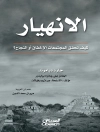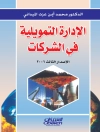This book examines the demographic development of Russia from the late Russian Empire to the contemporary Russian Federation, and includes discussions of marriage patterns, fertility, mortality, and inter-regional migration. In this pioneering study, the authors present the first English-language overview of demographic data collection in Russia. Chapters in the book offer a systematic overview of the legislation regulating fertility and the family sphere, a study of the factors determining first and higher order births, and an examination of population distribution across Russian regions. The book also combines research tools from the social sciences with a medical approach to provide a study of mortality rates. By bringing together approaches from several disciplines – demography, economics, and sociology – the authors of this book provide a comprehensive and detailed assessment of the historical roots of Russia’s demographic development.
Inhaltsverzeichnis
1. Population Statistics of Russia: The Russian Empire, the Soviet Union and the Russian Federation.- 2. Population Policies in Soviet and Modern Russia.- 3. Marriages and Divorces in Russia 1994-2011.- 4. Fertility and Uncertainty in Russia.- 5. Factors Affecting the Birth of Second and Third children in Russian Families.- 6. Changes in Mortality: Meta-Analysis.- 7. Inter-regional Migration: Analysis on Origin-to-Destination Matrix.- 8. In Lieu of a Conclusion.
Über den Autor
Tatiana Karabchuk is Assistant Professor of Sociology at United Arab Emirates University, UAE.
Kazuhiro Kumo is a professor at the Institute of Economic Research, Hitotsubashi University, Tokyo, Japan.
Ekaterina Selezneva is a researcher at the Institute for East and Southeast European Studies, Regensburg, Germany.












